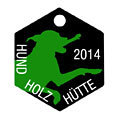Das Projekt bezieht sich in seinem Titel auf die legendäre Ausstellung Westkunst aus dem Jahre 1981, als Köln noch eine Metropole der Kunst war. In einer von Kölner Künstlern organisierten Ausstellungshalle wird eine öffentliche Situation geschaffen, in der überschüssige Restkunst abgegeben, getauscht, weiter bearbeitet oder aufgelöst werden kann. Beteiligt haben sich mit ihren Beiträgen insgesamt etwa 50 Künstler, die in Teilnahmeformularen das weitere Verfahren mit ihrer Restkunst konzipierten.
Das Programm aus Vorträgen, Filmpräsentationen (RESTKINO),
Stadtbegehungen, Workshops und Tauschterminen thematisierte und hinterfragte die im Kunstbetrieb üblichen Wertesysteme und erforschte auf praktisch experimentelle Weise Transformationsprozesse und Vorstellungen der Auflösung und Weitergabe von Kunst und ihrer Wirkung in der Gesellschaft.
Eine Website www.restkunst.net begleitet das Projekt und ruft weiter langfristig dazu auf, Werte im Kunstdikurs kritisch zu relativieren und durch die Weitergabe von Kunst und Ideen an Formen der Wirkungsausweitung zu arbeiten, die sich nicht an materiellem Gewinn orientieren und ästhetische Erscheinungsformen nicht überbewerten. Download PDF
The title of the project “Restkunst” (“left over art”) is based on
the legendary 1981 exhibition “Westkunst”, when Cologne was
still an art metropolis. Organised by Cologne artists, a public situation is created in an exhibition hall in which people can hand
in, exchange, edit or dissolve their excess, “rest”, artworks. All in
all, about 50 artists participate with their artworks. They filled a
form to determine the further practise with their “rest-art”.
The programme consisted of lectures, film presentations (called
RESTKINO), city walks, workshops and swap dates. These events
picked up and questioned the art world‘s value system as a central
theme. Moreover, the process of transforming or dissolving
art as well as the transduction of art and its effect on society was
explored in an experimental way.
The website www.restkunst.net accompanies the project. It calls for the critical relativisation of values in art discourse, furthermore
it proposes to develop forms of spheres of influence, which are
not geared to material profit and do not overestimate aesthetic
manifestations. Download PDF english version




